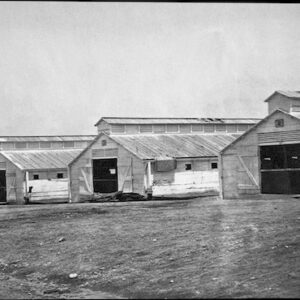Tag: fire hydrant
 Wikipedia says: A fire hydrant, waterplug, or firecock (archaic) is a connection point by which firefighters can tap into a water supply. It is a component of active fire protection. Underground fire hydrants have been used in Europe and Asia since at least the 18th century. Above-ground pillar-type hydrants are a 19th-century invention.
Wikipedia says: A fire hydrant, waterplug, or firecock (archaic) is a connection point by which firefighters can tap into a water supply. It is a component of active fire protection. Underground fire hydrants have been used in Europe and Asia since at least the 18th century. Above-ground pillar-type hydrants are a 19th-century invention.
Before piped mains supplies, water for firefighting had to be kept in buckets and cauldrons ready for use by ‘bucket-brigades’ or brought with a horse-drawn fire-pump. From the 16th century, as wooden mains water systems were installed, firefighters would dig down to the pipes and drill a hole for water to fill a “wet well” for the buckets or pumps. This had to be filled and plugged afterwards, hence the common US term for a hydrant, ‘fireplug’. A marker would be left to indicate where a ‘plug’ had already been drilled to enable firefighters to find ready-drilled holes. Later wooden systems had pre-drilled holes and plugs. When cast-iron pipes replaced the wood, permanent underground access points were included for the fire fighters. Some countries provide access covers to these points, while others attach fixed above-ground hydrants – the first cast iron ones were patented in 1801 by Frederick Graff, then chief-engineer of the Philadelphia Water Works. Invention since then has targeted problems such as tampering, freezing, connection, reliability etc.
Showing the single result
